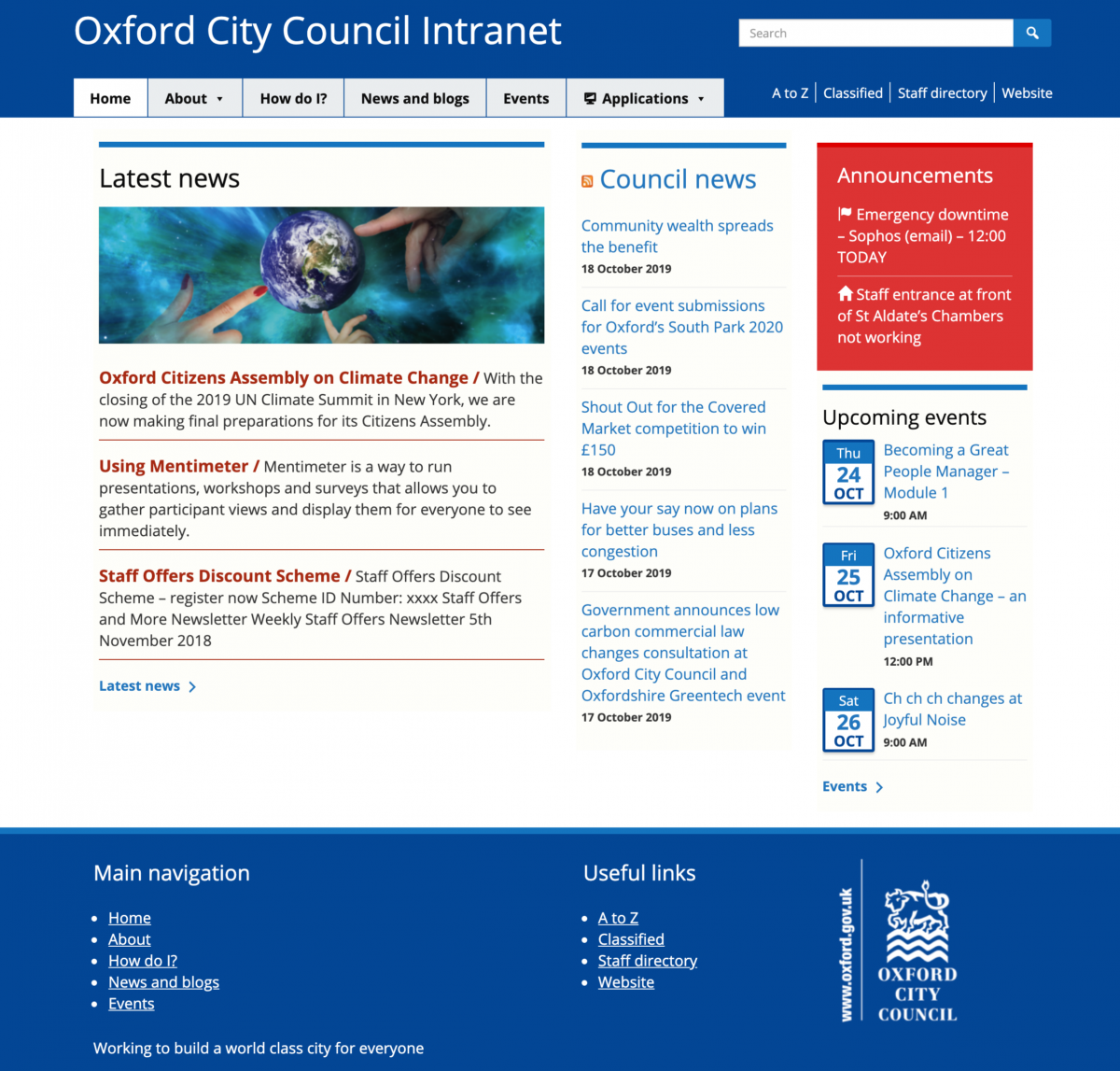I’ve just read an interesting blog post by Oxford City Council, sharing their experience of building a new intranet CMS using GovIntranet, and highlighting the importance of content on an intranet.
Read the OCC blog post on creating a new intranet.
I’ve been watching on the sidelines as Neil Lawrence and the digital team at OCC have been experimenting with their new intranet platform. There have been a few forum posts on our GovIntranetters help site. And I got to meet Martin and Raffaele from the OCC digital team when they came to our recent GovIntranet Club meeting. But I didn’t discover the full details about their project until reading the recent blog post.
The team highlight many of the typical issues that cause an intranet to turn bad. From lack of content ownership, to document overload, they show how they plan to take control of their intranet and turn it into something useful.
IT-developed intranets
When the intranet is developed by IT people, the focus tends to be on providing a technical solution for a file-sharing system, and trying to fit every Microsoft product on a homepage. The intranet is created by providing a folder-structure interface and stacking it with Microsoft documents. With Office 365, people can now stack the intranet with documents from anywhere. Whoopee!
The result? An intranet that is essentially a festering stack of documents with a bad case of versionitis. Documents written by people who don’t know or care about accessibility. Documents written in technical or legal language that tick all the boxes in someone’s workflow, but can’t be found, understood or relied upon by the users they are intended for.
You’ll find multiple versions of documents with different dates and version numbers and FINAL versions, and FINAL-FINAL versions. You’ll find all these versions in your search results. And most of your searches will result in a list of documents. It’s no wonder that the biggest complaint I hear about Sharepoint and document-based intranets is that the search engine is poor.
We are seeing better search results and happier users on intranets where we have rewritten content that is buried in Word documents and PDFs, into bite-size pieces of HTML content. And we don’t include documents in search results.
Staff profile data
A good people directory is one of the keys to a useful and engaging intranet. How to source the data is a question that we deal with on most intranet build projects.
In an ideal world, user profile information would synchronise across accounts and devices, and people would only need one login. As a new joiner, my account would be ready on my first day, and removed on my last day.
In reality, ‘people data’ is held separately in HR systems such as Agresso and SAP, finance and payroll systems, Google accounts, Microsoft Outlook accounts, internal IT systems and on the intranet. The quality of the data can be poor; unstandardised, out of date and inconsistent across systems.
I have found that a blended solution works best, importing information from various systems while also allowing staff to update their own information directly on the intranet.
Everyone is a content publisher
In this age of social media, anyone can publish anything, anytime from anywhere. So we should follow suit on the intranet, right? Wrong! Writing good ‘online’ content, whether it be news articles or guidance information, requires good writing skills and good communication skills.
Few people talk about the unpublishers. The focus is always on creating, adding, uploading and publishing. Trouble is, once people have hit the publish button, the content is forgotten about. Box ticked. Job done and dusted.
There needs to be a gateway, some form of quality control, before content is published. This can be in the form of a centralised publishing model, where one team approve all the publishing, or by building a team of devolved publishers and content owners who have been trained in the essentials of online writing, and who will take ownership of their content by keeping it up to date, removing unnecessary clutter, testing and analysing.
And it’s the removal of clutter that is often neglected. Each new piece of content on the intranet makes it more difficult for end users to find information. A process of content expiry, review and removal is essential to maintaining good quality search results and clean content.
It’s great to read about the work that OCC is doing to put the new intranet in place. The user-centred approach and commitment to good HTML content bodes well for the ongoing success of their intranet.
